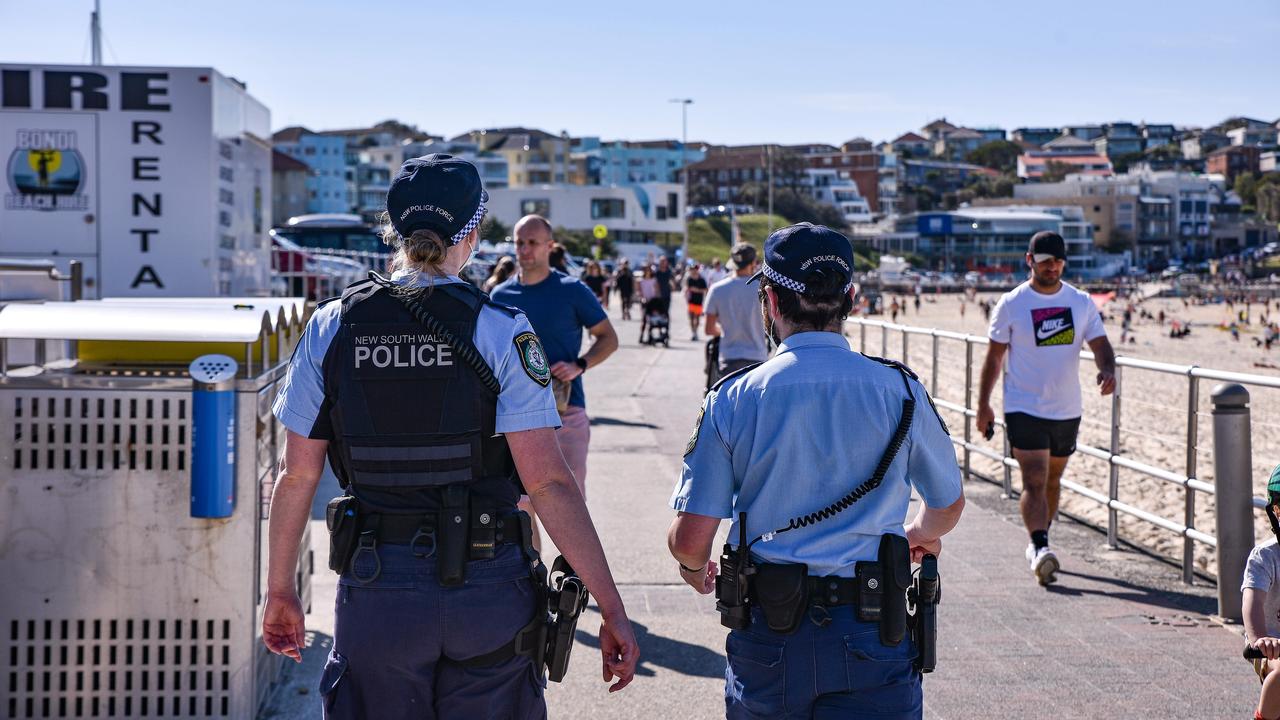Your guide to tonight’s lunar triple-treat
Tonight’s ‘lunar trifecta’, when Australian stargazers will be treated to a total lunar eclipse, supermoon and a rare blue moon can be watched here.
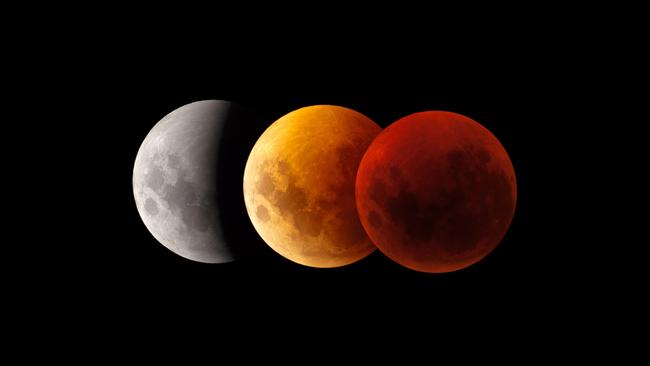
It’s been a 30-year wait but Australian stargazers are in for a triple-treat on Wednesday night when they get to see a blue moon turn red.
Enthusiasts will be able to feast their eyes on a total lunar eclipse, which will turn the moon a brooding, dark red, coinciding with both a supermoon and a rare blue moon.
How to take the best moon photos
If you’re setting up a tripod or turning your iPhone to the sky, here are a few tips to capture this rare triple threat.
1. Get proper exposure
Photographers will talk about this a lot as it will be the difference between capturing the moon and capturing a white blur that you tell people is the moon. Do this by turning the settings to manual and getting the ISO right, which brings us to step 2.
2. Pay attention to the settings
ISO, shutter speed and aperture work together like the earth and the moon during this lunar trifecta. While these might sound like fancy photographer words, if you take a second to understand them, they will dramatically improve your picture. Put your camera into manual, set a low ISO (around 100 or 200), choose a mid range aperture (F stop) around F11, and turn the shutter speed to 1/250 or 1/125 (depending on what works with the ISO.)
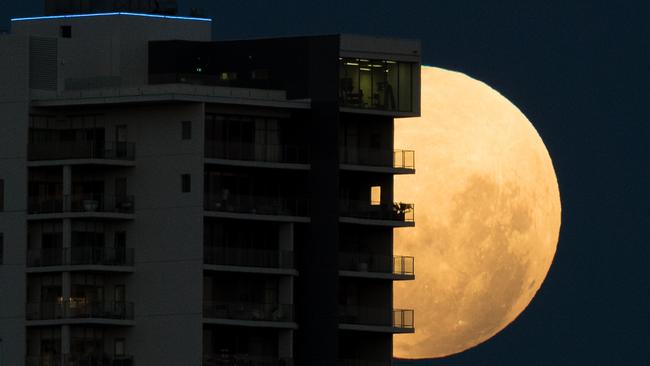
3. Make sure your camera is stable
Whether you’re taking pictures on your phone or on a professional grade camera, your shot is going to be wildly improved if the camera is stabilised. Don’t have a tripod? Get creative and use books, glasses or whatever is handy to prop up the device.
4. Position yourself
In NSW the moon is set to rise at 7.46pm before the sun sets at 8.01pm. Put your back to the sun and capture the moon rising to the east. From this angle the moon should look huge. From the time the shadow begins to move across the moon, it will take a few hours so there’s lots of time to enjoy clicking that shutter button.
Sadly, if there’s cloud coverage your photography is going to be impacted which means for some it could be quite hard to capture the rare lunar events tonight.
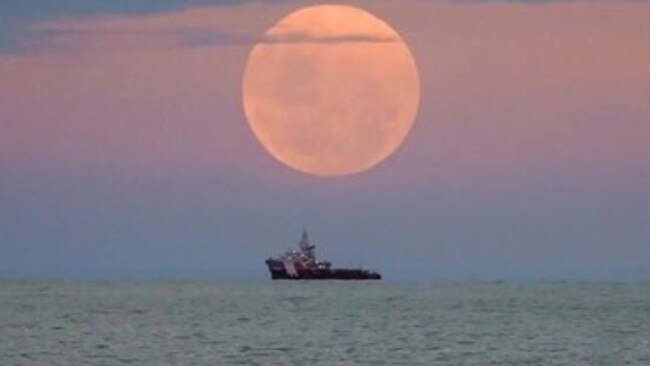
How, when and where to see the triple lunar event
The last time it happened in Australia was December 30, 1983, the same year Bob Hawke was elected prime minister, but in other parts of the world, it’s been more like 150 years.
The phenomenon is set to have astronomers looking to the heavens across Australia.
“Tonight, we have three lunar events happening simultaneously; the moon will be at perigee (the closest point in its elliptical orbit to Earth), it will be a blue moon for most of the world and — most spectacularly — it will be a total lunar eclipse,” Penrith Observatory manager Raelene Sommers said. “The total lunar eclipse will be visible for all of Australia and parts of Europe, Asia and the United States. This is often referred to as a blood moon because the moon appears red. This is because the blue wavelengths of light are more scattered than the red, resulting in the reddish colour — this must have been scary for ancient humans that didn’t understand what was happening,” she said in a statement.
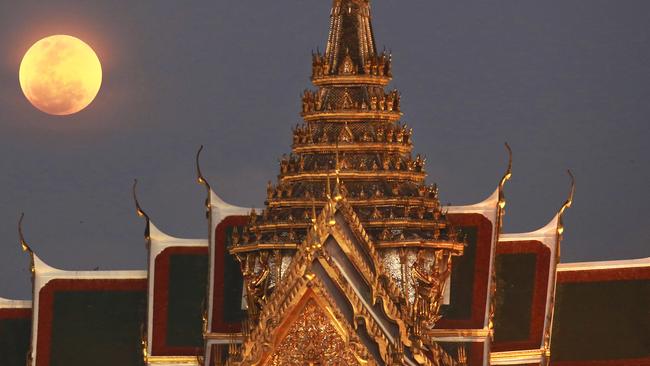
The observatory, in Sydney’s west, will live stream the event. Astrophysicist Alan Duffy says the random event is a rare trifecta, with the moon appearing bigger and a third brighter before it turns red when the moon passes into the Earth’s shadow and reflects the sun back at the Earth. “It is not as ominous as the blood moon name might suggest”, Professor Duffy told the Nine Network.
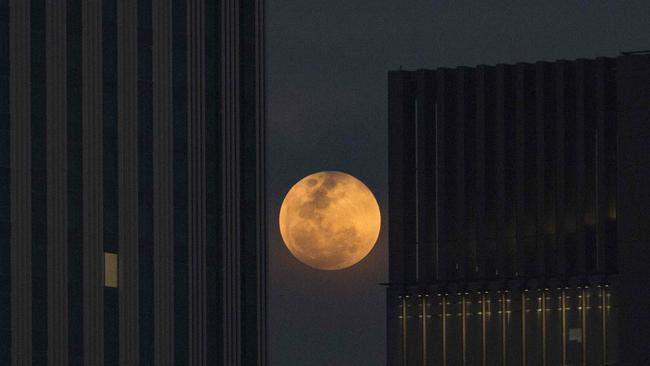
Australians witness a total lunar eclipse about once every 2.8 years on average but it is when it occurs with both a supermoon and blue moon that the lunar event becomes a true rarity.
Prof Duffy said there were two critical phases to Wednesday night’s super blue blood moon and lunar eclipse.
The first is the moonrise, which will happen as the sun sets. “Stand with your back to the sun and watch to the east as the moon rises and thanks to a psychological trick called the moon illusion, it will look enormous,” Prof Duffy said.
For NSW stargazers, the second event is the eclipse, which will occur at 11.50pm.
“It takes a few hours, though, so you can afford to get comfortable and enjoy the sight of the shadow beginning to move across the surface of the moon. “And then, from about 11:50pm onwards, it will be completely red and you can enjoy that sight for about an hour.”
What to look for
Total lunar eclipse
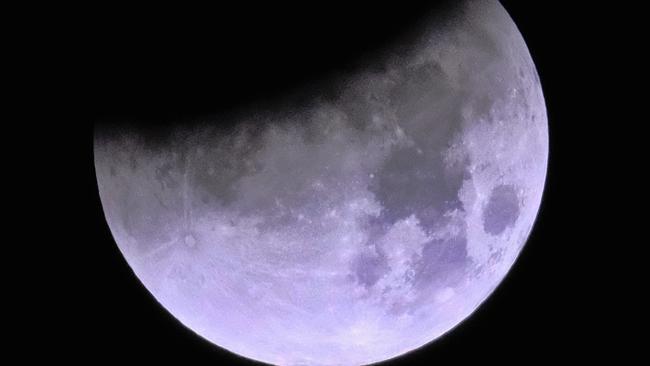
From late on Wednesday night, when the moon is full, it will slide entirely into the earth’s shadow.
This will turn the moon a brooding, dark red due to light being bent or refracted onto its surface by the earth’s atmosphere. This effect is commonly referred to as a blood moon.
Australians can witness a total lunar eclipse about once every 2.8 years, on average. But here’s where the super moon and the blue moon come in and elevate this lunar event to a true rarity.
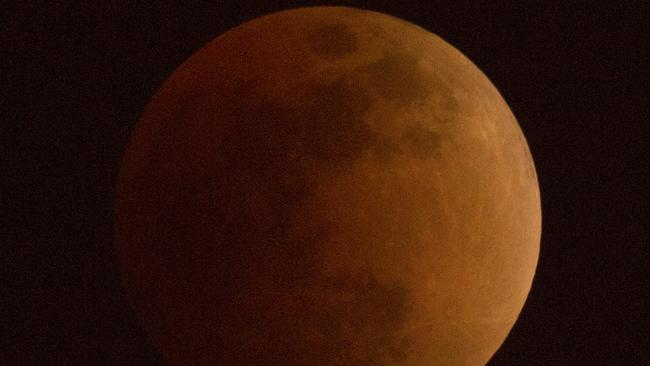
Supermoon
Wednesday night will also be a supermoon, when the full moon will be closest to the earth on its orbital journey — a mere 360,198km away.
Blue moon
In some parts of Australia, Wednesday night’s full moon will also be a blue moon, which has nothing to do with the colour blue.
A blue moon is simply the second full moon in any calendar month.
When to view the total lunar eclipse
All times are given in local time
Adelaide: Totality begins 11.21pm, ends 12.38am
Brisbane: Totality begins 10.51pm, ends 12.08am
Darwin: Totality begins 10.21pm, ends 11.38pm
Sydney, Melbourne, Hobart: Totality begins 11.51pm, ends 1.08am
Perth: Totality begins 8.51pm, ends 10.08pm
With AAP

